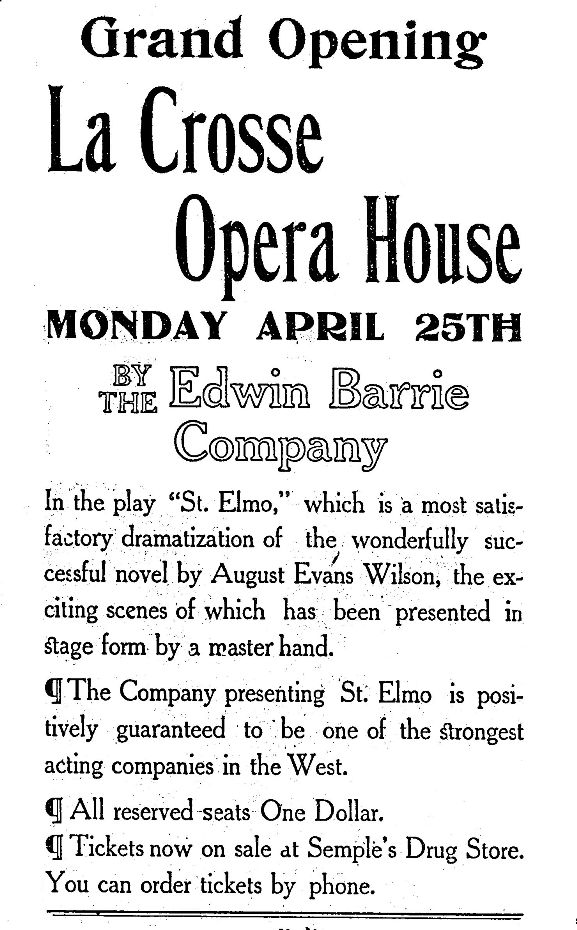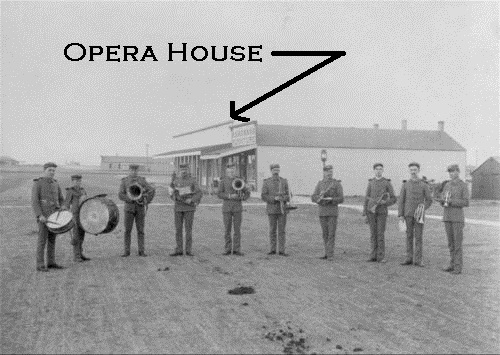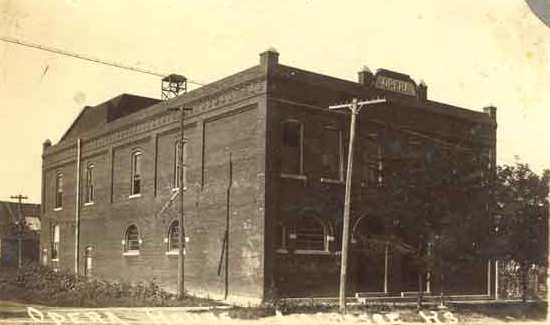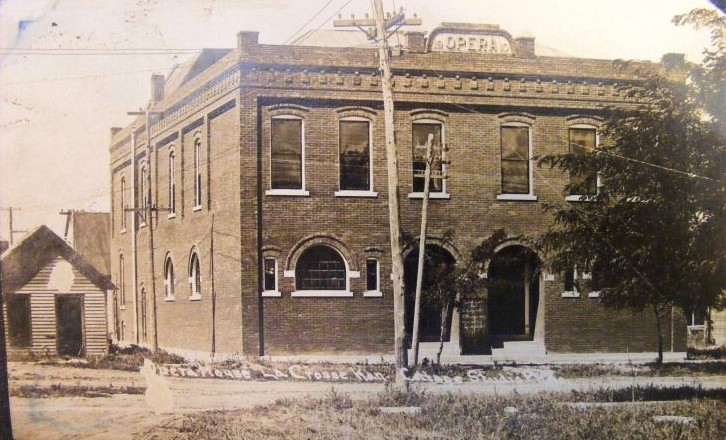The Andrews Opera House
In the late evening on a Monday night in 1909, flames engulfed nearly an entire city block in LaCrosse. Among the buildings destroyed was the Andrews Opera House. All that was salvaged from the opera house were a couple of reels of film and an Edison Picture Machine. “Judge” James E. Andrews, prominent La Crosse businessman spearheaded the construction of a new opera house. A corporation was formed, stock was sold, and within a few months a new building was under construction.
 In the spring of 1910, the new facility was completed. It was located on the northeast corner of Eighth and Elm Streets, one block west of the Main Street business district.
The building was a two-level brick structure fifty feet in width and seventy-five feet in length. It featured an auditorium with a proscenium stage, ground and upper-level
seating, dressing rooms, storage areas and a lobby. A loft above the stage provided ample clearance for large props and backdrops. The opera house was lighted throughout
with electricity and could seat up to 1,000 patrons. The total cost of the structure was $12,500.
The LaCrosse Republican called it "no doubt the best playhouse on the Missouri Pacific road between Salina and Pueblo." People of the day could hardly believe that this
magnificent facility had arisen out of a tragedy that had happened less than one year before. The first performance, "St. Elmo", was held on April 25 of that year, nearly
one year to the day from the date of the catastrophic fire.
In the spring of 1910, the new facility was completed. It was located on the northeast corner of Eighth and Elm Streets, one block west of the Main Street business district.
The building was a two-level brick structure fifty feet in width and seventy-five feet in length. It featured an auditorium with a proscenium stage, ground and upper-level
seating, dressing rooms, storage areas and a lobby. A loft above the stage provided ample clearance for large props and backdrops. The opera house was lighted throughout
with electricity and could seat up to 1,000 patrons. The total cost of the structure was $12,500.
The LaCrosse Republican called it "no doubt the best playhouse on the Missouri Pacific road between Salina and Pueblo." People of the day could hardly believe that this
magnificent facility had arisen out of a tragedy that had happened less than one year before. The first performance, "St. Elmo", was held on April 25 of that year, nearly
one year to the day from the date of the catastrophic fire.
The opera house was operated by a number of different managers over the next 20 years. After a reorganization, the opera house was renamed the La Crosse Theatre. Live performances were regular at first, but with the growing popularity and advancement of the movie industry, motion pictures soon became the primary form of entertainment. On December 5, 1929, "Jerry of Jericho Road", presented by the LaCrosse High School Glee Clubs, was one of the last live performances held in the theatre.






